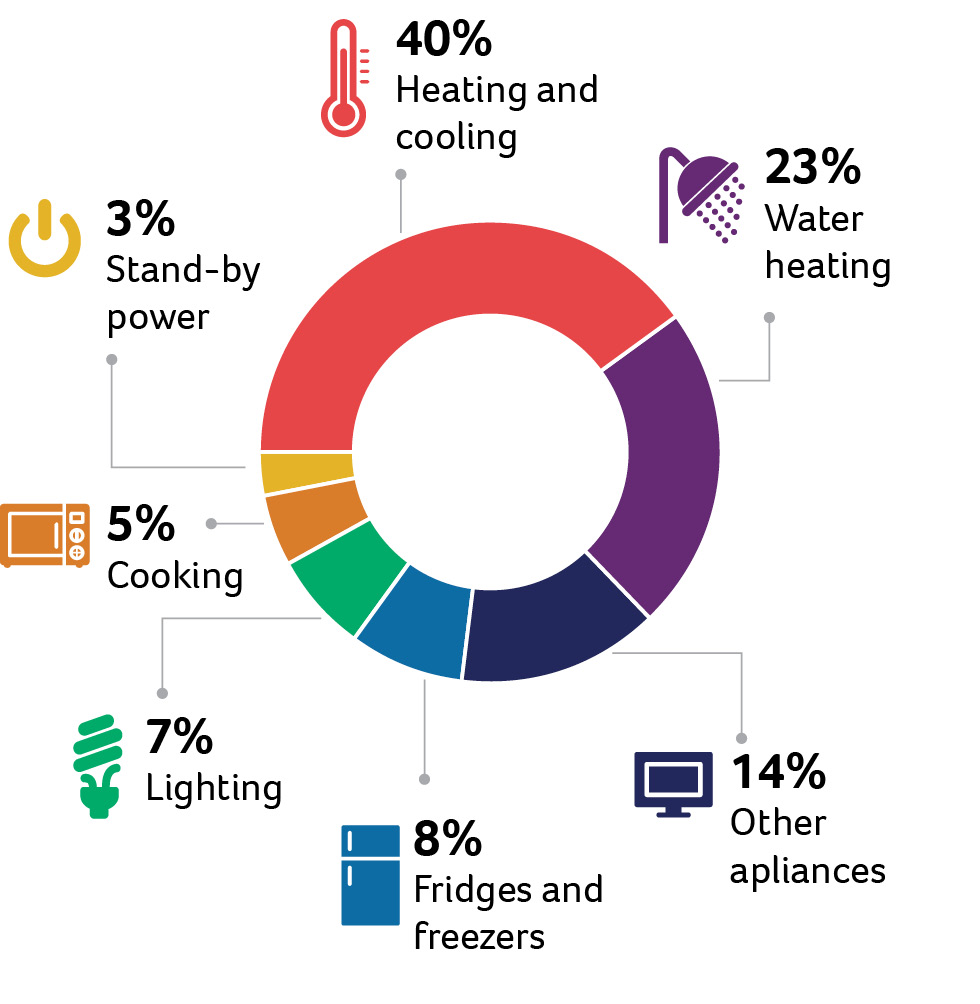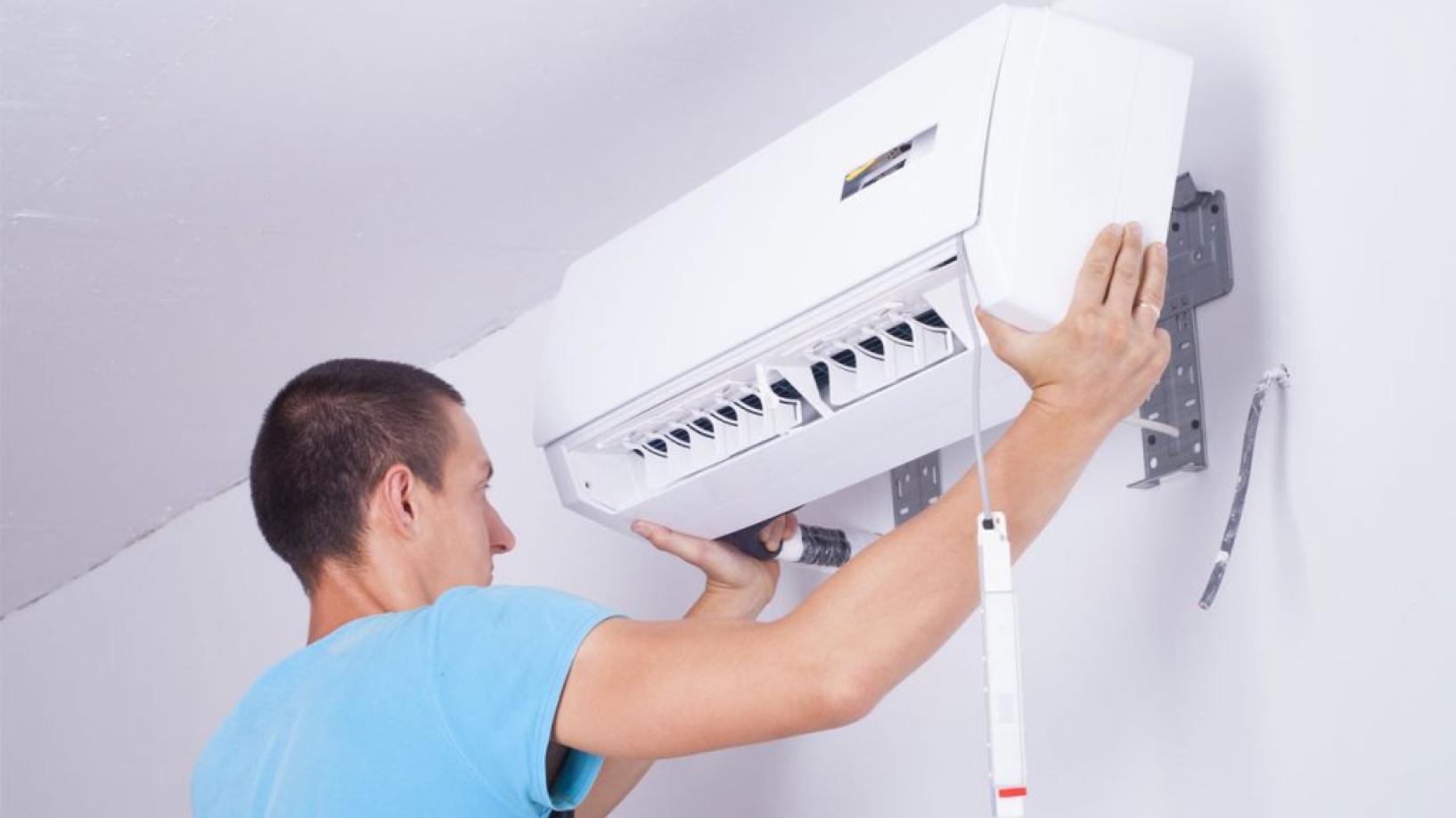In this article, we share six energy hacks to help you get a more comfortable home and reduce your energy bill.
1. Heat and cool your home the smart way
Did you know heating and cooling can make up to 40% of your home’s energy use? Being smart about how you heat and cool your home is a very effective way to reduce how much energy you use.

However, it’s important that you still feel comfortable. You should never do without heating or cooling if it will harm you and your health.
Here are some smart things you can do:
- Only heat / cool the rooms you use and close all other doors.
- Adjusting your thermostat up or down by one degree can decrease your energy use by 5-10%:
- In winter, set the temperature at 18-20 degrees
- In summer, set the temperature at 24-26 degrees.
- If you have a split system air conditioner, you might be able to use it to heat your home (which is usually cheaper than other types of heating). Look for the ‘sun’ symbol on your remote control.
- Have ceiling fans? Use these before turning on the air conditioner. In winter, check if it has a reverse function and use it with your heater. The fan will help circulate the hot air more evenly.
2. Stop air leaks
Our homes can be ‘leaky’. This means it’s easy for the air in our home to escape outside, making it harder to keep our home at the right temperature.
To find gaps where hot or cold air might be escaping, look for:
- Obvious gaps e.g. light under doors and windows
- Movement in curtains
- Gaps around built-in appliances
- Listen for rattles when it’s windy
- Feel for moving air (a 'draught')
When you have found places where the air might be escaping:
- Use door snakes for under doors
- Use heavy curtains to keep warmth in
- Seal around doors, windows, walls, and floors. You might be able to do some of this on your own (e.g. filling small gaps with silicone sealant) but if in doubt, get professional help.
3. Insulate your home
If your home is well insulated, this can save you up to 20% on your energy bill. Start with ceiling insulation because it is normally the easiest to install and the best value for money. This is followed by underfloor insulation, and finally wall insulation.
4. New or replacement appliances
When you're replacing old appliances like a washing machine or a dishwasher, aim for the highest star Energy Rating Label that suits your budget. The higher the energy rating, the more efficient the appliance is - and the cheaper to run! Although energy efficient appliances can be more expensive to buy, the amount you can save on your energy bills over time can make them cheaper in the long run.
Use this Energy Rating Calculator to compare the appliance you're thinking about buying with other appliances.
Also, think about what size you need for your circumstances, and explore your state or territory government website for any rebates you may be eligible for.
5. Look at your hot water use
Around 20% of your energy use goes on heating water. If you don’t already have one, think about installing a heat pump system. This will help reduce your bills in the long run, and they are especially good if you have solar.
Using a cooler wash on your washing machine can also save energy (and save you money).
6. Start your renewable energy journey
Solar is still a good way to save money on your energy bills, even without high 'feed-in tariffs' (in the early days of solar, governments would often pay people money to generate electricity from their solar - this is called a 'feed-in tariff'. This is coming to an end but solar is still a great way to save money off your bills: it's money 'off' rather than money 'back').
If you install solar panels, during the day you can use the sun to power your home, reducing your need to buy energy from your retailer. If you combine solar with a battery, this means you can store electricity you make from your solar and use it even when the sun isn’t shining. Remember, even with solar and a battery, there will still be times when you might need to use energy from the grid to power your home.

